Workers camping in tents, onerous conditions, and alleged ‘exploitation’ by its partners, internet giant Amazon has battled plenty of accusations over the treatment of staff.
In response, the American firm, which made sales worth £7.3bn in Britain last year, says it is “proud” of its “safe and positive” workplaces.
Yet when a request for a visit to an Amazon warehouse was denied by the firm’s press office last year, HuffPost UK sought an alternative way to explore its hidden world.
The answer was a little-known secret. Since 2015, members of the public have been able to apply for a spot on bizarre sightseeing tours held at Amazon sites across the country. So we signed up.
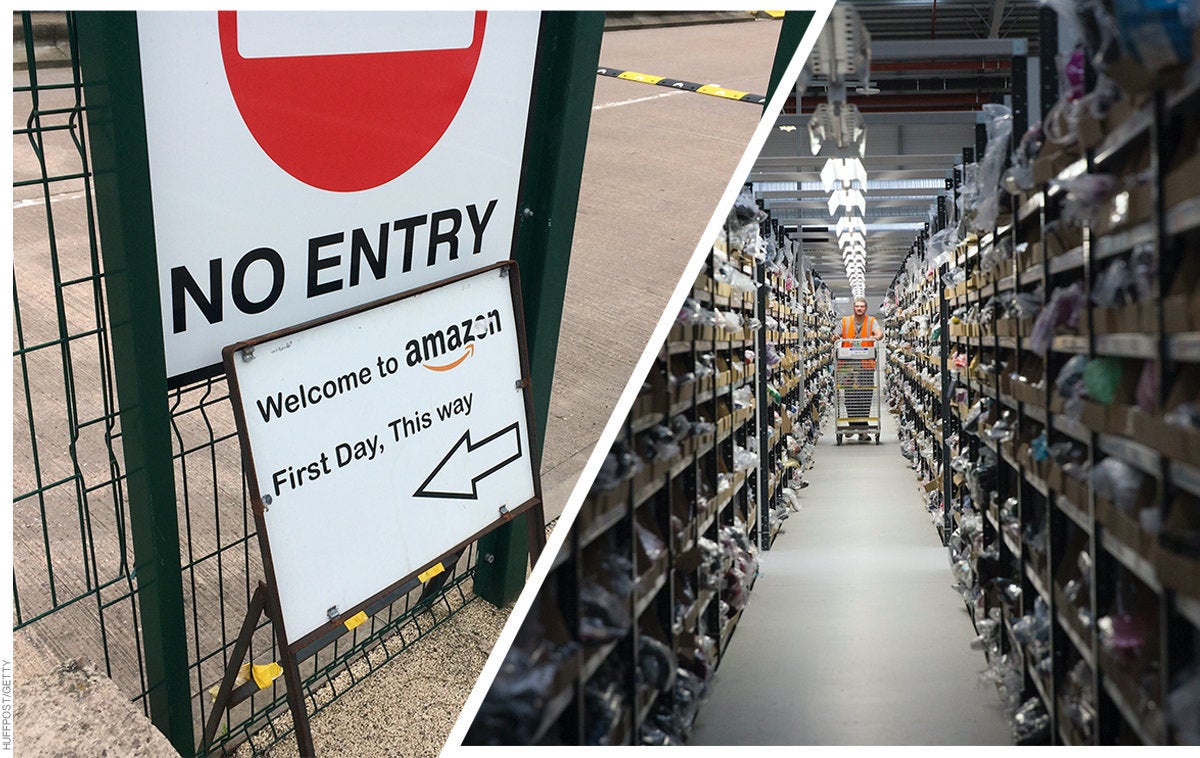
In Rugeley, Staffs, Amazon’s main entrance is guarded by thick steel bars and turnstiles. Every loud click of the gate is a record of movements in and out of this 700,000 sq ft blue-tinted building. But the only clues as to the site’s purpose are some small logos, and a cute security building designed to look like an open Amazon box.
It was through the heavy turnstiles that HuffPost UK passed as part of a public sightseeing tour laid on by the American giant, for anyone who might be interested. On a recent weekday, that included HuffPost’s reporter, an elderly couple who lived nearby, a handful of Amazon sellers who run businesses through the website, and four representatives of a rival distribution firm looking for ideas. So far this year, some 4,000 people have taken a tour of the Rugeley warehouse, which the firm refers to as ‘BHX 1’.
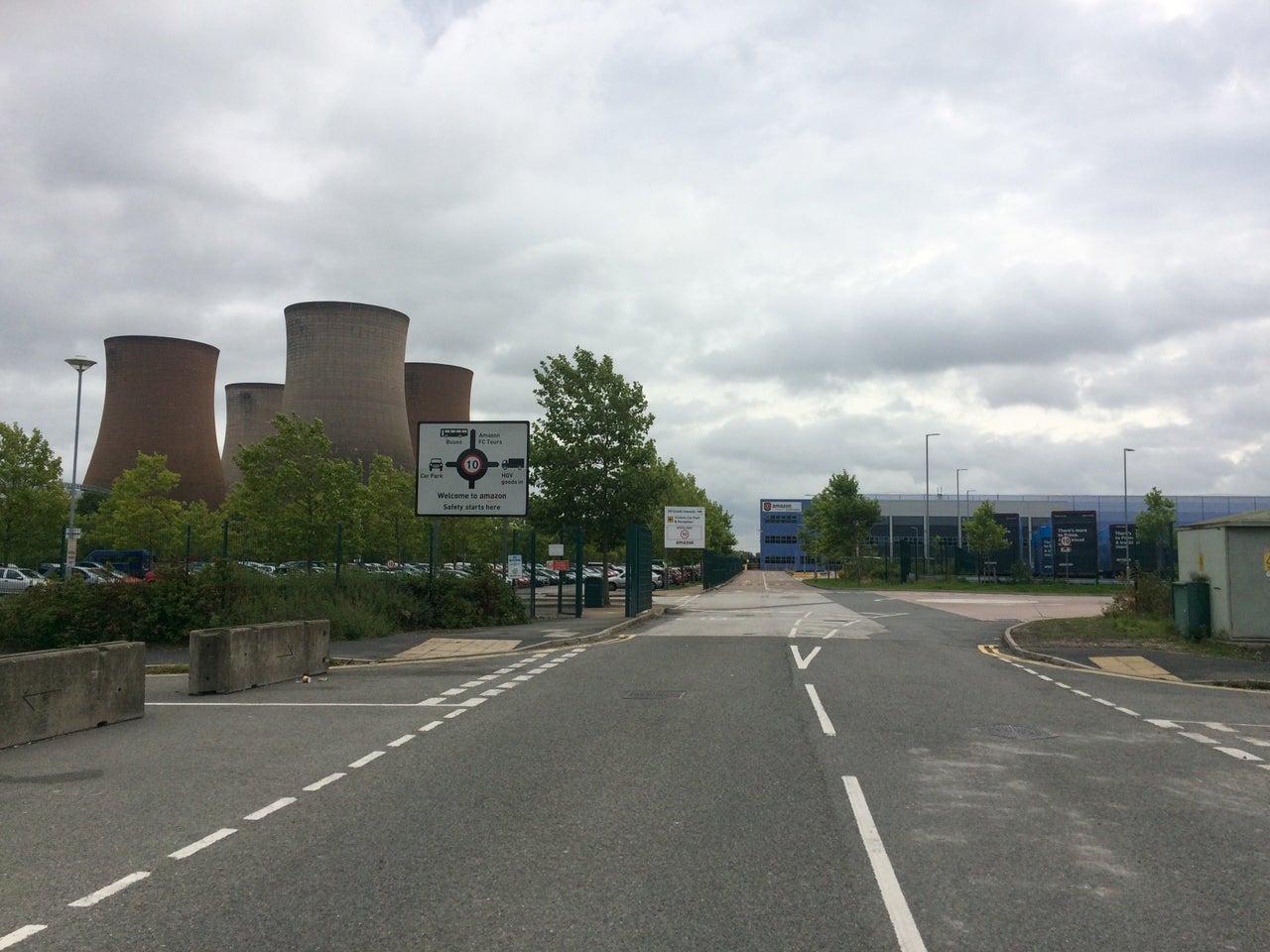
The hour-long visit is choreographed to mimic the journey of a product, beginning with its arrival into the warehouse, a process called ‘inbounding’. Here workers move about, talk, and interact, while scanning, weighing and packing goods for storage on shelves. The job is never finished. Some 60 plus docks for huge lorries line an entire side of the warehouse, coming and going every few minutes.
The next stage is called ‘stowing’, where items are placed randomly on shelves. By design, products aren’t grouped together, preventing bottlenecks among ‘pickers’ - the name for workers tasked with finding goods among the building’s whopping 1.7 million items. For a firm founded in 1994 as an online bookseller, there are remarkably few tomes here. On one shelf, a donut inflatable, 2kg of protein powder, and a Lego Star Wars set were placed side-by-side. Once found, items are placed into plastic boxes which whiz automatically on conveyors to their next destination, like the doors from Pixar’s ‘Monsters, Inc.’
Then comes ‘reboxing’ where multiple items are finally placed together into one customer order. It’s here the tour spots that someone, somewhere, has purchased a pack of 40 Durex condoms together with two bottles of Cillit Bang.

The next stage is ‘packing’, where these orders are placed into boxes and sent off for delivery. Here workers stand stationary behind computer stations, which bark correct box sizes at them in huge letters. A machine prints and cuts the exact size of tape needed to secure the box before it’s sent whizzing on its way.
Those working at this stage did so in silence, glancing up quickly at the passing tour before the computer flashes another instruction. Shifts last 10 hours with a legally required half-hour break and two shorter breaks, and there are roughly 1,400 permanent employees working alongside thousands more temporary agency staff. “We take agency staff on permanently all the time,” Amazon’s tour guide says.
And while online reviews from people claiming to be employees at Rugeley bemoan the pace of work and the length of shifts, the tour guide said she didn’t accept people were unhappy at work. “People really enjoy it here,” she says.
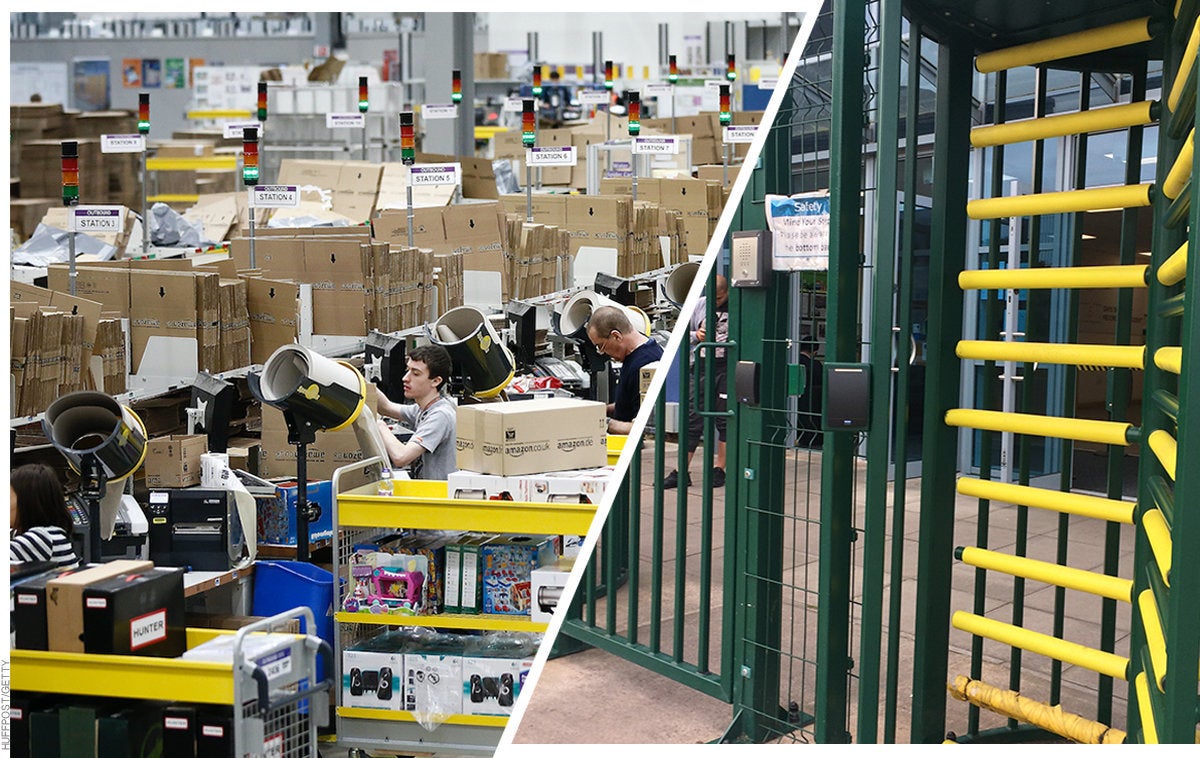
Offering such a huge numbers of jobs, it’s little wonder Amazon was welcomed to Rugeley with open arms in 2011. “People are crying out to get back to work,” local MP Aidan Burley said at the time. Two decades earlier, the town’s colliery had closed on roughly the same site. Rugeley Power Station, with its iconic cooling towers looming large over the town, closed last year with the loss of 150 jobs. The West Midlands continues to have above average unemployment.
But outside the complex, Amazon has designed the site to reflect the reality: not all staff come from the local area. A bus station is attached to the large car park with leaflets given to new starters revealing three daily return services to Birmingham, 20 miles away, costing £8 a day.
There are other pressures too. HuffPost saw workers rushing from the site to pick up lunch from nearby outlets. Two men in a McDonald’s just 180 yards from Amazon’s main gates seemed particularly agitated at the slow-moving lunchtime queue. “We’ve got to clock back in at quarter past,” one says to the other. “We’re not going to make it.”
After a few tense minutes, the pair grab small brown bags filled with two double cheeseburgers and a Diet Coke, run to a car parked outside and speed quickly towards Amazon, tyres screeching as they go. It’s 1.03pm, 12 minutes before their deadline. Enough time, in theory, to wolf down their meal and dash towards the warehouse, clocking back in as they go.
And despite the close proximity, McDonald’s staff concede not many Amazon workers venture even this short distance for their lunch. “We don’t get that many in, surprisingly,” one server says.
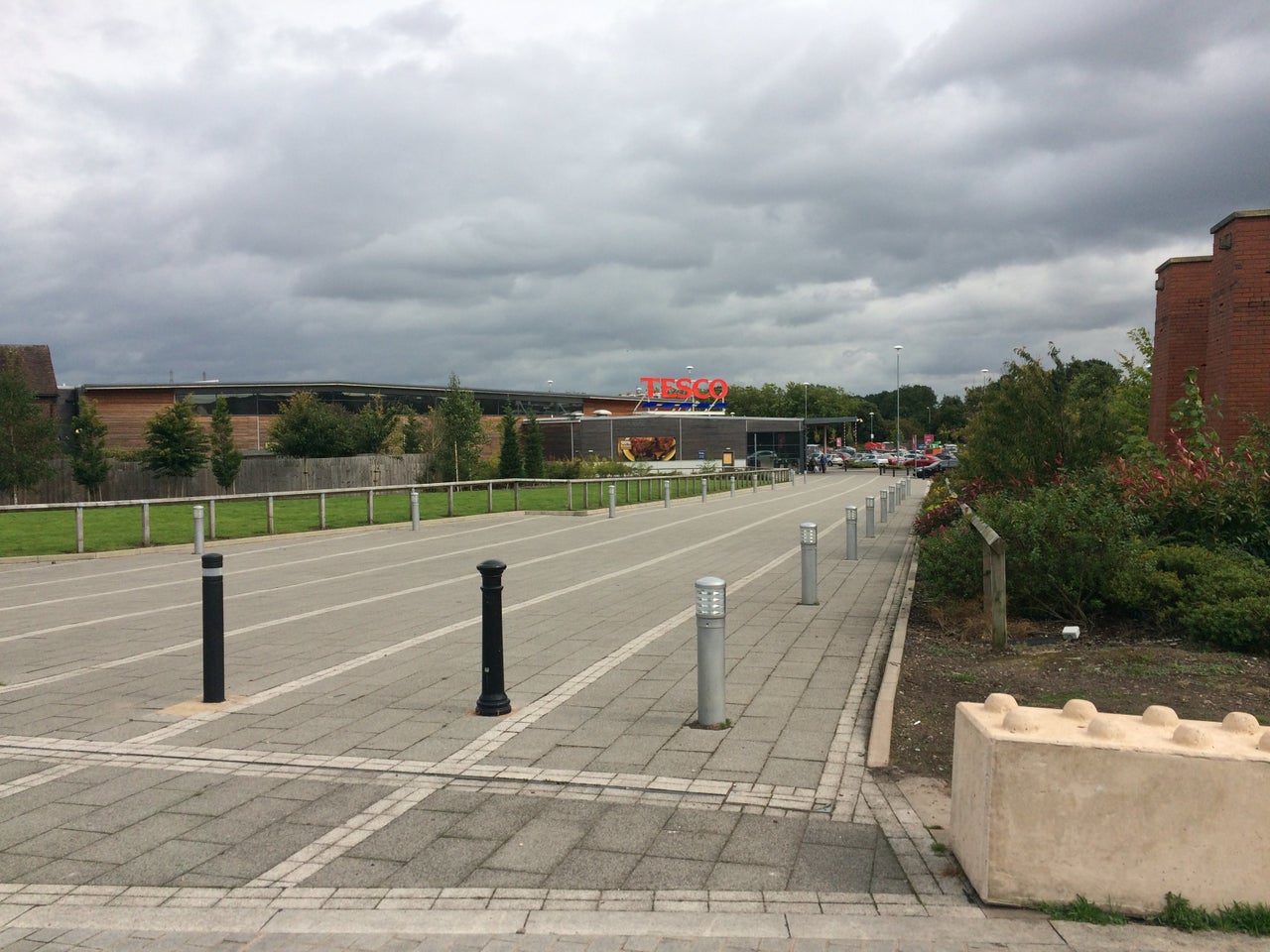
Hopes of an Amazon-esque boom to the local economy haven’t played out. Rugeley estate agents told HuffPost that around 20 percent of lettings each month involve workers linked to Amazon. “I wouldn’t say it has boosted the area all that much, lettings are still buoyant and I’d say they would be without Amazon,” Diane Moore-Jones, director of the town’s C Residential, says. “But I would say that some of our lettings each month are connected to it. It’s mainly Romanian and Polish people looking for somewhere to live nearby. We helped a German lady last month.”
And a short walk alongside the local 19th century canal shows the changes wrought on this town of 20,000 in recent years. A newly-built Tesco lies just off a busy ring road, with a large free car park. A clean and clear walkway exists between it and the town centre, itself anchored by a large but dated Morrisons store, where two hours’ parking costs £1. Beyond that, Rugeley’s pedestrianised town centre snakes towards a bus station and deserted indoor market hall.
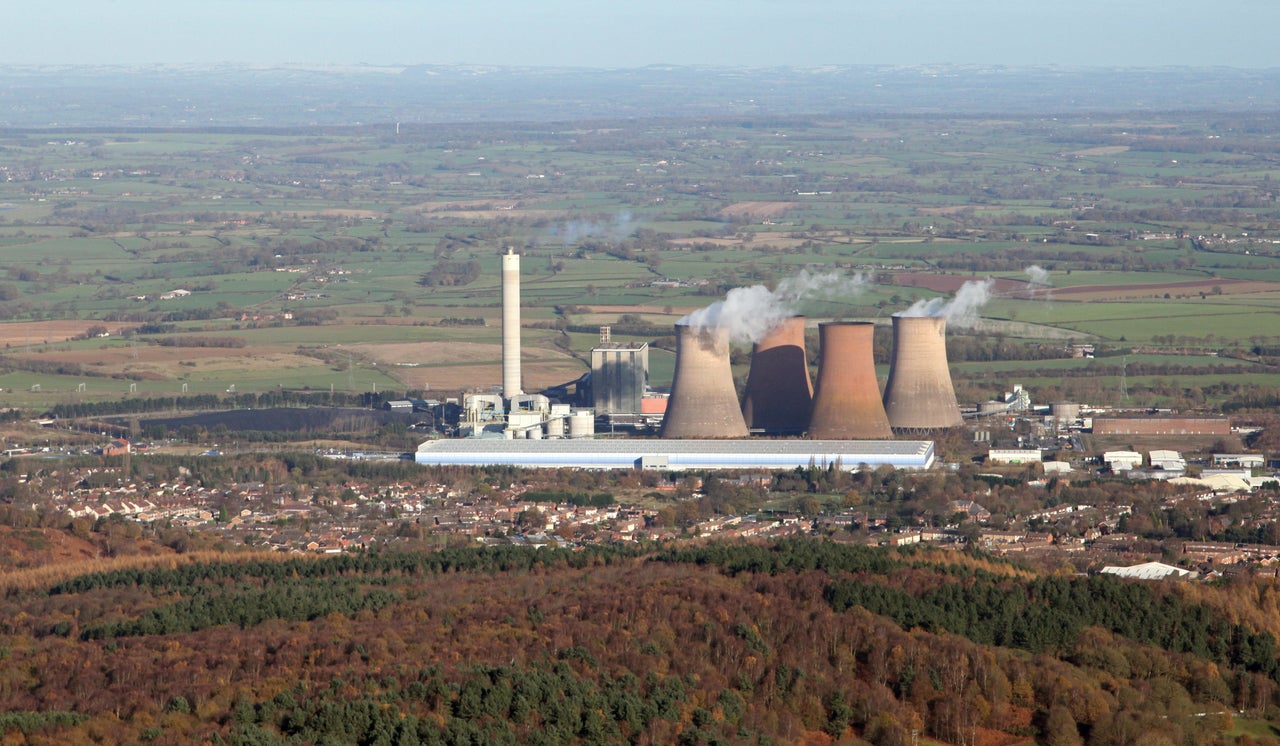
And speaking to some of those trying to drum up trade here, Amazon feels like a million miles away. “I don’t know much, other than it’s there,” Angela Wiggin, 49, says beside her stall on the town’s almost deserted outdoor market. “I can’t say I’ve noticed a difference since it came. Things are still hard for me.”
On weekdays, Wiggin sells perfume kits and gift sets, makeup and toys, the sorts of items that are constantly whizzing around the Amazon warehouse. But on a Saturday she rolls out her collection of cupcakes. Fresh food is currently only sold by Amazon in London. “I do much better with those,” Wiggin says. “I’ve started to get direct orders.”
But for others, the firm’s presence seems to have had a more certain impact. “It’s upped our business,” hairdresser Louis Hurley, 29, says confidently. “We get a lot of workers in here from Amazon. Lots of them aren’t British, they’re Romanian or eastern European, but they talk. It’s helped, I’d say.”
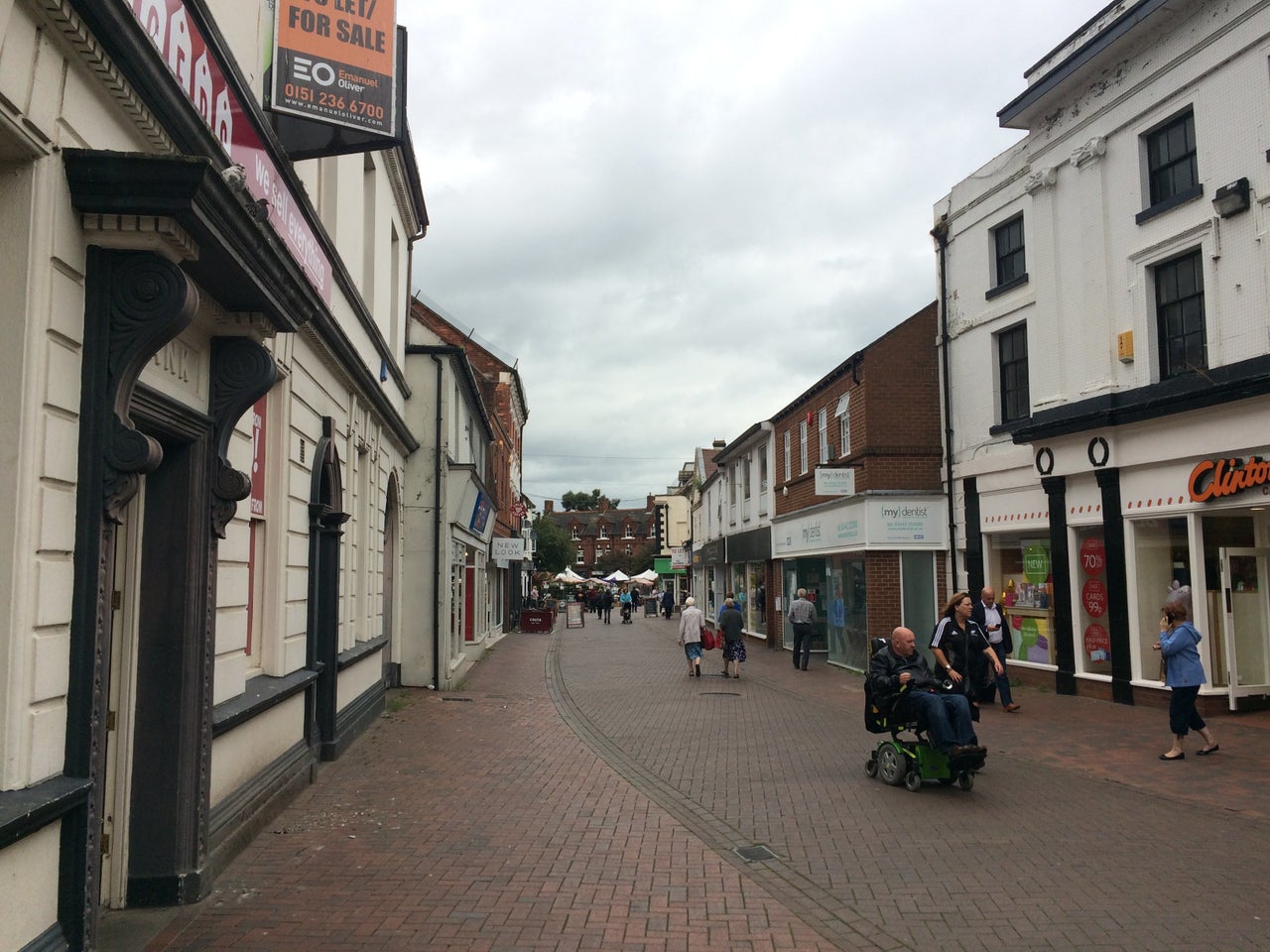
Yet for others, the challenge posed by the retail giant would be there whether its warehouse was nearby or not.
“The way things stand, with Amazon and the rest, we won’t be here in five years,” Chris Collins, the owner of Big On Gifts, in Rugeley town centre, says. His well-appointed store displays with great care many of the items HuffPost had seen an hour earlier being unceremoniously picked into plastic boxes in the warehouse.
And it’s the irresistible draw of online shopping that’s forced the 59-year-old to stand idly by as people purchase goods on their phones while in his shop.
“I’ve had it where customers come in and smell these fragrant candles and ask me questions about them, then they get out their phone go on Amazon and literally order them in front of me,” he says. “Then they say thanks and walk out.
“I know Amazon isn’t just one firm, it’s thousands like myself.
“But it’s a great business model, isn’t it, all those sellers doing your market research for you,” Collins says, before adding after a beat: “Bastards.”
